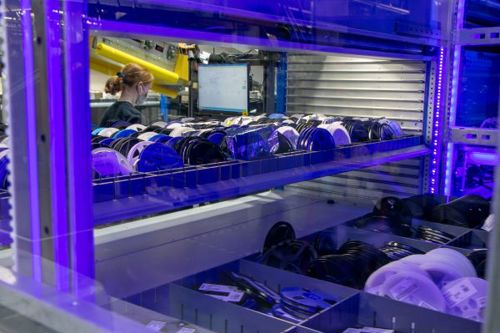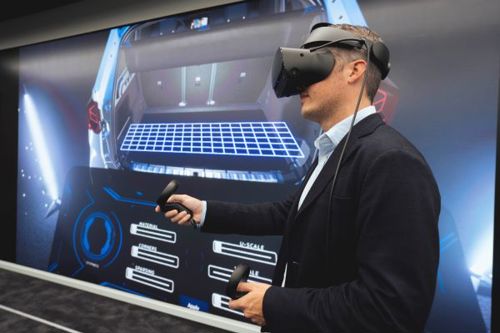Analyst firm, Future Market Insights, expects the digital transformation market to realise a CAGR of over 27% between 2023 and 2033, increasing to a value of over $10,400 billion. The movement spearheaded by the banking, financial services and insurance sector and dominated by Asia Pacific (39% market share) is bringing benefits for manufacturing companies where automation and connectivity brings productivity and energy efficiency rewards.
The case for digitalisation was made in Digitalise to Decarbonise, a report by the manufacturers’ association, Make UK and Sage. It found that 62% of businesses that had adopted digital technologies reported savings in energy costs, with half reporting savings of between £10,000 and £100,000 in the last 12 months. Of those respondents, 44% reported increased productivity, streamlined systems, savings on labour costs as well as material wastage and water usage.
Current digitisation goes beyond IoT connectivity to deliver data insights and uses augmented reality (AR) and virtual reality (VR), artificial intelligence (AI) and digital design tools to lower a manufacturer’s carbon footprint while increasing yield.
The shop or factory floor uses communications and automation in such a way that it can be configured as the needs of the business change. For example, automated guided vehicles (AGVs) move from workstation to workstation according to the manufacturing process, but also relocate based on the availability of a production machine or assembly/inspection station. The recalculation of the AGV is through cloud-based machine learning software which sends work instructions to the new location and uploads production instructions to the new work area, ready for the next production stage.
Automation
In electronics distribution, Mouser has introduced automated systems that depend on various data points to process orders. The company is also expanding its distribution centre in Texas, where it is testing a new software tool for the receiving area which will use artificial intelligence/machine learning to scan manufacturer and product information on incoming deliveries to automate the data entry, revealed Tina Sears, vice president of warehouse operations.

It also uses vertical lift modules (VLMs) which Sears describes as working like giant, computerised filing cabinets, delivering products directly to the workstation, reducing the time needed to pull parts. “To eliminate the need for manual sorting of packages, automated scanners on conveyor belts can detect the method of shipping from the label and instantly sort and direct the packages to the different carriers [e.g., UPS, Fed-Ex, DHL],” she said.
“With our iPack machines, we have implemented automated shipping lines that can build and process smaller box sizes for the majority of orders. This has eliminated wasted space in the box and reduced the amount of packing materials needed, resulted in lower shipping costs too,” Sears added.
The industrial sector worldwide consumes more than half of the world’s total delivered energy (54%), so any savings here will result in significant reductions of both energy and costs. The sources for cost savings are numerous, from sensors which turn off lights and heating when an area is empty, for example, to the collection and analysis of real-time data to optimise production.
The use of real-time data to identify maintenance checks to prevent stoppages has been well-documented but companies are using newer technologies as part of a digitalisation strategy. BMW Group used Nvidia’s 3D graphics collaboration platform, Omniverse, to plan and design its new EV plant in Debrecen, Hungary. Logistics and production planners used a virtual replica of the plant and animated processes to visualise and identify where to locate robotics for optimal performance in confined areas. The virtual planning allowed planners to experiment and change elements with “practically no cost” to optimise production processes before construction began.
The plant is scheduled to open in 2025, with capacity to produce 150,000 electric vehicles per year. The company projects 30% savings from optimised facilities planning and efficiency, a reduction in change orders and capital investments and increased stability in product launches.
Ross Krambergar, responsible for geometric simulations for virtual commissioning at BMW, said, “The plant produces new vehicles every minute, so every minute not building a car is the price of a car lost,” he explained.
Generative design
BMW said generative design plays an increasingly important role in the efficient and resource-saving design of vehicle components. A model is produced to meet specific constraints or criteria and then refined subject to feedback or changed parameters. The iterative process was used to design the aluminium mountings for the BMW i8 Roadster, connecting the convertible top to the sports car’s body.

According to BMW: “Generative design enables the construction of components with complex geometries and optimal use of materials. Their weight is up to 50% lower than conventionally developed components. Algorithms from the fields of quantum computing and artificial intelligence can be used for particularly demanding tasks, thereby significantly accelerating the design on components.”
The company also said that the design of components using computer algorithms is expected to be established as a standard method by 2025, with around 20% of all vehicle components developed and designed using generative design.
Forward-looking vision
AR is used on the factory floor or in the warehouse, guiding operators with real-time data and digital instructions overlaid on screens, headsets or glasses. It is also used for training by teams which may be located in different areas of the building, country or overseas, to guide through handling procedures, anticipate errors and identify defects.
VR can be used to create immersive environments for trainees or new recruits to practise handling challenging theoretical scenarios or learn maintenance procedures without downtime. It can help trainees or test engineers understand how a part or system works and also to simulate emergency situations and respond to them without being in danger.
Possibly the most dramatic new technology is the use of holograms at Airbus via Microsoft’s HoloLens 2 mixed reality (MR) headset. HoloLens 2 allows users to manipulate holograms as they would physical objects. The headset has eye tracking which can sense when the wearer’s gaze is on a particular location for it to produce relevant information with automatic scrolling as the text is read. It allows training without having to take equipment out of service and also saves on travelling time and costs to be where particular equipment is located.
When the holographic technology was first introduced, Airbus identified over 300 use cases and Airbus has estimated that HoloLens 2 helps designers accelerate the design validation process by 80%.
On the production line, it estimates that manufacturing time has been reduced by a third, with an improvement in quality, as staff access instructions or diagrams as digital information overlaid on a piece of equipment to help with complex, or hard to reach tasks.













